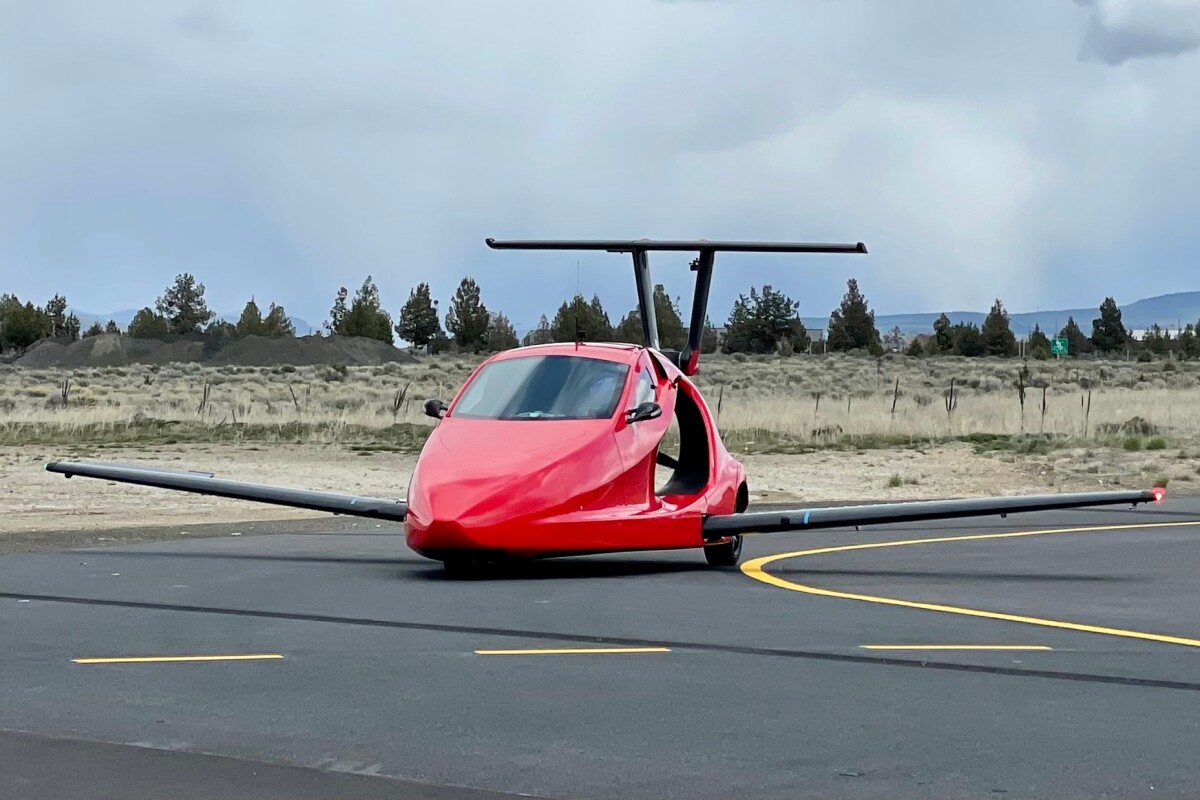After 14 years of development, the Samson Switchblade – a fast, street-legal three-wheeler that converts at the touch of a button into a 200-mph (322-km/h) airplane – has been approved for airworthiness by the FAA. The team is now preparing for flight tests.
The Switchblade is named after the knife-like way its wings swing out from beneath its two-seat cabin when it's time to fly. The tail, too, swings out from where it's stowed behind the large pusher prop, then unfolds into a generous T shape. Samson says the entire push-button conversion from street-legal trike to aircraft takes less than three minutes, and while it's yet to demonstrate the entire process on a physical prototype, it looks like it'll be a pretty spectacular process.
It runs on a 3-cylinder, 1.6-liter liquid-cooled engine that takes 91-octane pump gas and makes 190 horsepower. This is effectively used as a generator, powering electric wheels in drive mode and an electric prop motor when it's time to fly. As a three-wheeler, it can be registered as a motorcycle in many areas, and Samson says it's capable of speeds over 125 mph (201 km/h).

Find an airstrip and take off, and the Switchblade's standard cruise speed is 160 mph (257 km/h), enabling a range of 450 miles (724 km) to a full 36-gal (125-L) tank of fuel. You'll need a 1,100-ft (335-m) runway for takeoff, and a shorter 700 ft (213 m) for landing. It'll easily fit in a regular garage once the flight gear is folded away, standing just 5.1 ft (1.5 m) high and occupying a 16.8 x 6-ft (5.1 x 1.8-m) footprint not far off that of a family sedan.
In a world of dazzling eVTOL promises, it's easy to forget what the original flying car vision promised: drive out your front gate, mosey down to the local airstrip, soar at high speed over the traffic below, touch down at an airport near your destination, and drive yourself right into a car park outside the front door. The fact that this thing runs on regular gas also puts easy cross-continental journeys well within reach.
Samson's been plugging away on this project since the iPhone was a year old, so there's considerable excitement around the team now that the FAA has inspected the prototype and given it the thumbs-up for registration as an experimental aircraft. This means it's cleared to fly, and the team has begun preparations to get it airborne within the coming weeks. That includes high-speed runway tests like the one in the video below.
Starting from an "estimated price" of US$150,000, the Switchblade is a fairly pricey machine, but Samson has already taken reservations for the first 1,670 and counting, according to a recent interview with The Hill. Indeed, one reason why the company's so keen to get its prototype airborne is that many of its (free) reservations convert into US$2,000 deposits within 45 days of the first public flight.
The Switchblade will sell as a kit aircraft, taking somewhere around 2,000 hours to build at home. Samson is putting together a Build Assist Center where owners can come and make use of a "pro build team" and ideal working setup to get their aircraft finished in as little as a week. At that point, it's time for a paint job and an FAA inspection for experimental aircraft registration. A visit to the local DMV later, and you should have a license plate for street use.
The company has designed the Switchblade to meet Part 23 standards for full certification as well, so a fully certified version may one day be available. Watch this space!
Source: Samson Sky









